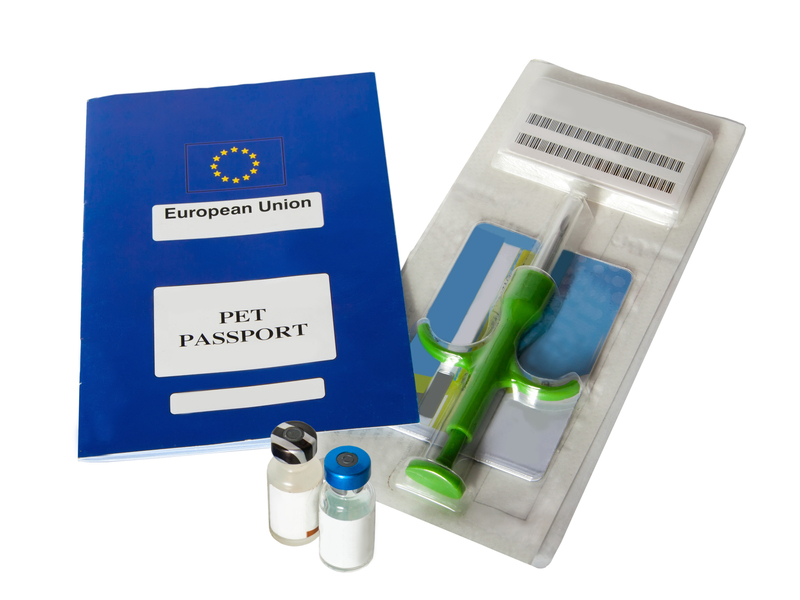Essential Tips for Transporting Your Bed and Mattress
Posted on 16/06/2025
Essential Tips for Transporting Your Bed and Mattress
Whether you're relocating to a new home or simply rearranging your furniture, transporting your bed and mattress can be one of the most daunting tasks during a move. With the right knowledge, tools, and planning, you can ensure your mattress and bed frame arrive at your next destination safe, clean, and ready to use. In this comprehensive guide, we outline essential tips for moving your bed and mattress efficiently and damage-free. From preparation to loading and unloading, you'll find everything you need to know for a successful move. Let's dive in!
Why Properly Transporting Your Bed and Mattress Matters
- Prevents physical damage: Bed frames and mattresses are an investment. Incorrect handling may lead to tears, scratches, or structural issues.
- Maintains hygiene: Using proper covers keeps your mattress free from dirt, dust, and allergens during the move.
- Ensures comfort: Mattress deformities or bent frames from improper moving can impact sleep quality.
- Protects your warranty: Many mattress warranties become void if the product is damaged during transit due to user negligence.
Using proper techniques and equipment helps you safeguard your sleeping investment.

Step 1: Prepare Your Bed and Mattress for Moving
1. Gather the Right Supplies
- Mattress bag or plastic wrap
- Moving blankets or furniture pads
- Bubble wrap or foam sheets
- Sturdy packing tape
- Tool set (for disassembling bed frames)
- Stretch wrap for headboards or delicate components
- Straps or rope for securing during transport
- Gloves for safety
Tip: *Invest in high-quality mattress covers* to protect against moisture and wear during the move.
2. Disassemble the Bed Frame
- Remove bed linens: Begin by stripping the mattress and packing all bedding separately.
- Carefully take apart the frame: Follow manufacturer instructions. Most frames can be disassembled using common tools.
- Keep hardware organized: Use labeled plastic bags for screws, bolts, and small parts. Tape them to the main bed frame to avoid loss.
- Wrap each component: Use moving blankets or bubble wrap around headboards, footboards, and side rails to prevent scratches.
Disassembling makes it easier to navigate stairs, doorways, and tight spaces while reducing the risk of damage.
3. Prepare Your Mattress
- Clean your mattress: Give it a thorough vacuum and spot-clean before moving.
- Encase in a mattress bag: This shields it from dust, water, and tears. Securely tape the bag shut.
Pro Tip: If your mattress is particularly heavy or flexible, enlist help to lift and maneuver it safely.
Step 2: Best Practices for Transporting Your Mattress and Bed
1. Moving the Mattress
Mattresses vary by size and flexibility. Here's how to handle different types:
- Traditional innerspring mattresses: These usually maintain their shape and are best transported upright, firmly secured to prevent tipping.
- Memory foam mattresses: These mattresses are heavy and flexible. Always keep them flat if possible to prevent folding and permanent creases.
- Hybrid mattresses: Transport as recommended by the manufacturer, typically flat or upright if adequately supported.
- Futon mattresses: Roll tightly and secure with rope before bagging for minimum bulk.
2. Lifting and Carrying Safely
- Lift with your legs: Always bend at the knees, not your back.
- Get help: Mattresses and frames are unwieldy; ask a friend or hire movers for assistance.
- Use straps: Shoulder straps or a mattress sling can make carrying large items more manageable and help prevent injury.
- Clear the path: Ensure halls, stairways, and doors are clear of obstacles before moving your bed or mattress.
3. Transporting in a Vehicle
There are several vehicle options for moving your mattress and bed components:
- Moving truck/van: Best for large beds. Lay the mattress flat or stand upright against a wall, securely strapped. Avoid placing heavy items on top.
- Pickup truck: Only for short distances and good weather. Always cover the mattress and tie it down tightly. Beware of wind lifting it during transit.
- Car roof: This method is risky. Most mattresses are not designed for this and can become airborne, causing accidents. If absolutely necessary, use strong straps, a protective cover, and do not exceed short distances or low speeds.
Note: Verify your vehicle's load limits and consult local laws before roof-transporting furniture.
Step 3: Unloading and Reassembling Your Bed
1. Carefully Remove Mattresses and Frames
- Use the same caution unloading as you did while loading.
- Check for signs of damage before removing protective covers.
- Carry mattress and bed parts gently to avoid scraping doorways or walls.
- Take breaks if needed, as carrying large pieces can be tiring.
2. Reassemble Your Bed Frame
- Lay out all frame parts and tools in the room where you want the bed.
- Follow the initial disassembly order in reverse.
- Check every bolt and screw: Ensure all hardware is properly tightened for safety and stability.
- Confirm that headboard and footboard are attached evenly and firmly.
3. Place Your Mattress and Final Touches
- Remove the mattress bag/plastic wrap just before placing the mattress on the bed frame.
- Allow a memory foam mattress to breathe and return to shape before using, especially if it was compressed or transported in cold temperatures.
- Freshen up with clean linens and your favorite bedding.
Congratulations, you've successfully moved your bed and mattress safely!
Special Considerations: Long-Distance and DIY Moves
1. Long-Distance Mattress Moving
- Climate protection: Over long distances, avoid temperature extremes and moisture that can cause mildew or foam breakdown.
- Extra padding: Longer trips increase the risk of jostling and damage; double-wrap fragile or valuable bed parts for added protection.
- Transport timing: Plan for the shortest, most efficient route to minimize stress on your mattress and bed frame.
2. Do-It-Yourself vs. Professional Movers
- DIY: Moving by yourself saves money and offers control, but requires physical ability and the right equipment.
- Professional movers: Offer experience, insurance, and speed. Consider for large beds, valuable furniture, or if you lack assistance.
If hiring a professional, communicate clearly about mattress size, weight, and any special assembly needs. This ensures they bring appropriate tools and materials.
Common Mistakes to Avoid When Transporting Beds and Mattresses
- Failing to use a mattress cover: Exposing your mattress invites stains, moisture, and pests.
- Improper lifting: Attempting to move beds without help or correct technique leads to injuries or property damage.
- Poor vehicle choice: Strapping a mattress on a small car roof without proper securement can endanger others and destroy your bed.
- Not securing items in the vehicle: Unfastened beds or mattresses may shift, causing breakage.
- Forgetting hardware: Losing connecting pieces means delays and frustration during reassembly.
Avoiding these common errors makes the entire process smoother and stress-free.
Storage Tips: If You Can't Set Up Right Away
- Store flat: If possible, lay the mattress flat to maintain its shape and comfort.
- Climate control: Choose a dry, temperature-controlled storage unit to prevent mold and odors.
- Support frames and slats: Avoid stacking heavy items on bed parts to prevent warping or breakage.
- Check regularly: If storing for weeks or months, inspect occasionally for pests or moisture.

Frequently Asked Questions
Can I fold my mattress to transport it?
Most innerspring and hybrid mattresses cannot be folded without permanent damage. Some memory foam mattresses may be bent slightly for short periods, but it's best to keep them flat or upright according to manufacturer guidelines. Always check your warranty and product instructions.
Is it safe to strap a mattress to the roof of my car?
Strapping a mattress to the roof is generally not recommended due to safety risks and the likelihood of damage from wind and road debris. If you must, use heavy-duty straps, cover the mattress well, and drive slowly for a short distance.
How can I move a king-size mattress by myself?
Large mattresses should not be moved alone. If unavoidable, invest in a mattress sling or moving harness, clear all obstacles, and move slowly. For added ease and safety, always have a second person help you.
What can I use if I don't have a mattress bag?
Heavy-duty plastic sheeting or moving blankets, securely taped, can substitute in a pinch. However, a specialized mattress cover provides the best protection.
Conclusion: Ensuring a Stress-Free Move for Your Bed and Mattress
Transporting your bed and mattress doesn't have to be stressful or risky. With these essential tips for moving your bed and mattress, you can ensure that your sleeping setup arrives at your new home in perfect shape. Remember to prepare with proper materials, follow safety procedures, and avoid shortcuts that could endanger your furniture or your health. With attention to detail and the right approach, you'll be resting comfortably in your new space in no time.
Have you recently moved your bed or mattress? Share your own tips and experiences in the comments below to help others make their transition smoother!
Related Resources:
- How to Choose the Right Mattress for Your Home
- Best Practices for Packing and Moving Large Furniture
- Maintaining Mattress Hygiene During a Move
For more moving tips and advice, bookmark our site and stay tuned for updates!



